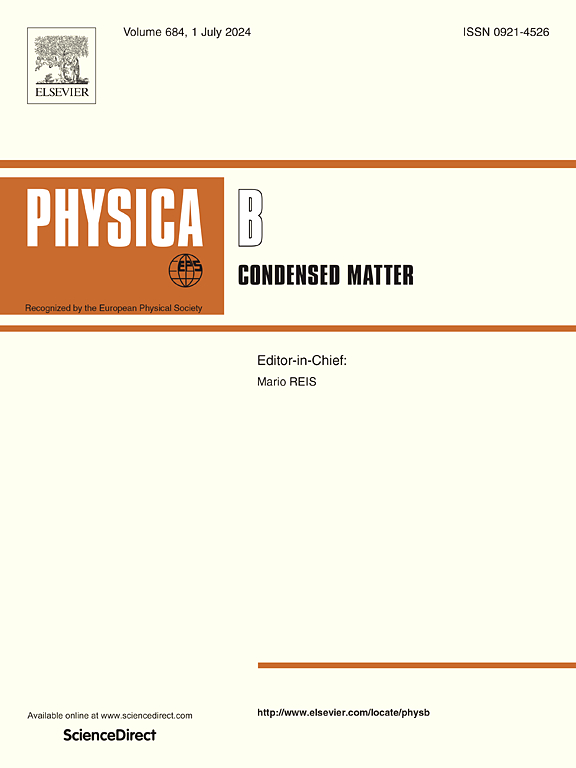First-principles study on selective laser melting of Ti48Al2Cr2Nb alloy
IF 2.8
3区 物理与天体物理
Q2 PHYSICS, CONDENSED MATTER
引用次数: 0
Abstract
The Ti48Al2Cr2Nb alloy formed by selective laser melting (SLM) was simulated by first-principles. The crystal phase relationship and interface bonding mechanism between the basic phases α2-Ti3Al and γ-TiAl in the alloy were simulated, and the interface stability of the Ti48Al2Cr2Nb alloy structure was explored. The results show that the Ti center-ST model in the γ-TiAl(111)/α2-Ti3Al(0001) interface model has the largest interfacial bonding work, the smallest interfacial energy and the strongest interfacial stability. The Cr and Nb elements are doped in the α2-Ti3Al(0001)/γ-TiAl(111) interface system, the bonding work and segregation enthalpy of the interface under the four doping systems were compared. It was found that the interface model doped with Cr and Nb was beneficial to improve the bonding strength of the interface and was beneficial to the stability of the interface.
Ti48Al2Cr2Nb合金选择性激光熔化第一性原理研究
采用第一性原理对选择性激光熔化Ti48Al2Cr2Nb合金进行了数值模拟。模拟了合金中α2-Ti3Al和γ-TiAl基相的晶相关系和界面键合机制,探讨了Ti48Al2Cr2Nb合金组织的界面稳定性。结果表明,γ-TiAl(111)/α2-Ti3Al(0001)界面模型中的Ti中心- st模型具有最大的界面成键功、最小的界面能和最强的界面稳定性。在α2-Ti3Al(0001)/γ-TiAl(111)界面体系中掺杂Cr和Nb元素,比较了四种掺杂体系下界面的成键功和偏析焓。研究发现,Cr和Nb掺杂的界面模型有利于提高界面的结合强度,有利于界面的稳定性。
本文章由计算机程序翻译,如有差异,请以英文原文为准。
求助全文
约1分钟内获得全文
求助全文
来源期刊

Physica B-condensed Matter
物理-物理:凝聚态物理
CiteScore
4.90
自引率
7.10%
发文量
703
审稿时长
44 days
期刊介绍:
Physica B: Condensed Matter comprises all condensed matter and material physics that involve theoretical, computational and experimental work.
Papers should contain further developments and a proper discussion on the physics of experimental or theoretical results in one of the following areas:
-Magnetism
-Materials physics
-Nanostructures and nanomaterials
-Optics and optical materials
-Quantum materials
-Semiconductors
-Strongly correlated systems
-Superconductivity
-Surfaces and interfaces
 求助内容:
求助内容: 应助结果提醒方式:
应助结果提醒方式:


